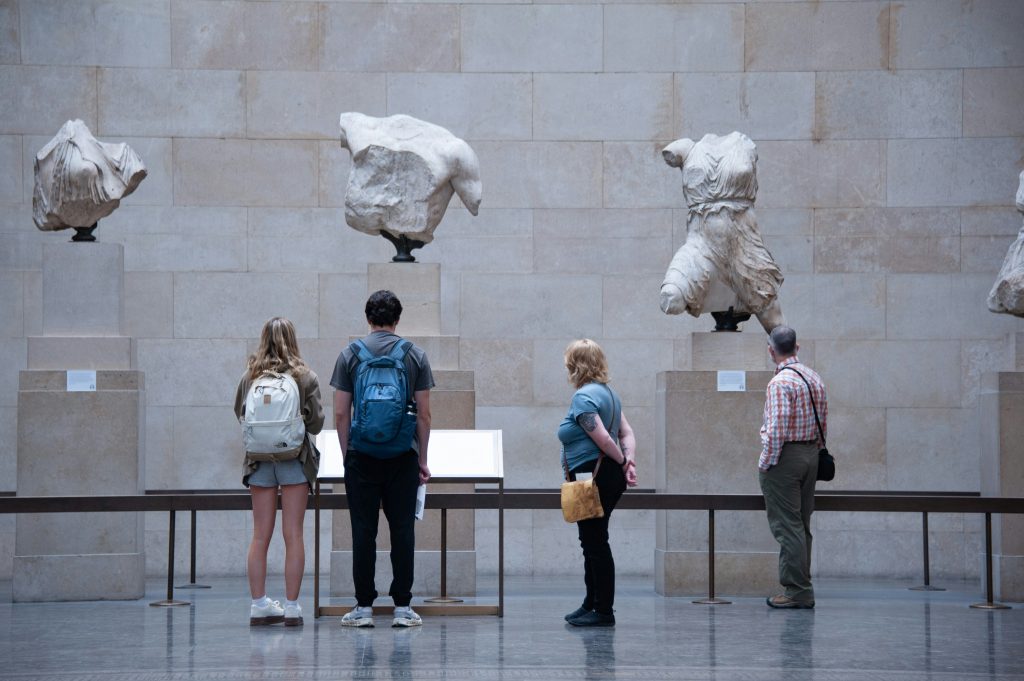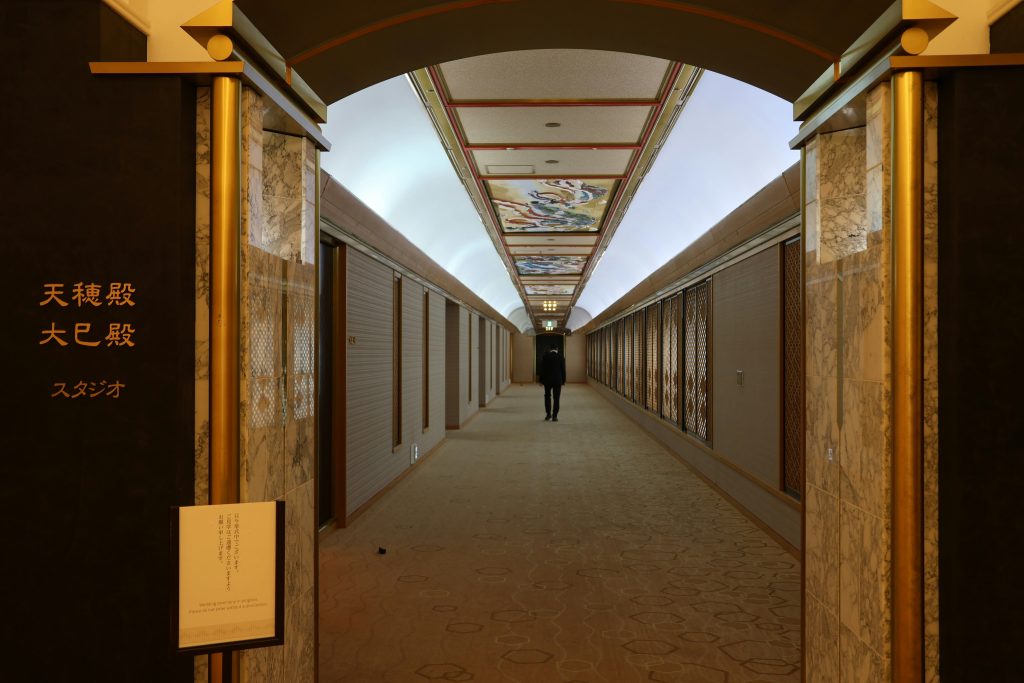
25 Aug Guided Tours in Art Exhibitions: A Path to Deeper Understanding
Introduction
Guided tours in the context of art collection exhibitions refer to structured, curator-led or docent-led experiences designed to help visitors navigate and engage with artworks in a meaningful way. Unlike self-guided visits, these tours provide visitors with expert insights, offering both factual information and interpretative commentary. Guided tours serve as a bridge between the audience and the artworks, breaking down complex artistic concepts and making them accessible to all visitors. In today’s modern museum and gallery settings, where audiences are diverse and exhibitions increasingly interactive, guided tours remain a vital tool for fostering appreciation, understanding, and engagement. They connect the historical and cultural narratives of art with contemporary perspectives, ensuring that visitors leave with a richer, more informed experience.
The Purpose of Guided Tours in Art Exhibitions
The primary purpose of guided tours is to enhance visitor understanding by offering expert interpretation of artworks and collections. Tour guides can provide valuable cultural, historical, and artistic context that may not be immediately apparent to a casual observer. This deeper layer of understanding allows visitors to connect emotionally with the artworks, seeing beyond the surface and into the artist’s vision and technique. By framing the artworks within broader narratives—be they historical events, artistic movements, or personal stories—guided tours encourage visitors to engage with the exhibition on a more intimate level. This makes the overall experience more meaningful and memorable, inspiring repeat visits and deeper exploration of the arts.
The Educational Value of Guided Tours
Guided tours play a significant educational role in museums and galleries, catering to different age groups, backgrounds, and levels of prior knowledge. For students and young visitors, they provide an introduction to art literacy, teaching how to interpret visual symbols, analyze composition, and understand artistic intent. For more experienced art enthusiasts, they offer detailed thematic narratives and advanced insights that deepen appreciation. Tour guides often weave cohesive stories around an exhibition, linking individual pieces into a broader thematic or historical framework. This narrative approach not only aids memory retention but also helps visitors see connections between artworks, styles, and cultural contexts, making the exhibition a holistic learning experience.
The Impact on Visitor Engagement
One of the greatest strengths of guided tours is their ability to transform passive viewing into active engagement. Through dialogue, questions, and interactive discussions, visitors become participants rather than mere observers. This two-way exchange encourages personal reflection, allowing visitors to relate artworks to their own experiences and perspectives. By fostering a sense of connection between visitors and the institution’s mission, guided tours can build lasting relationships and increase community involvement. The emotional resonance created during these tours often inspires visitors to explore further, share their experiences with others, and return for future exhibitions.
The Role of the Tour Guide
Tour guides are the heart of the guided tour experience. They require a combination of skills—deep art knowledge, strong communication abilities, and the capacity to adapt their approach to suit different audiences. Effective tour guides strike a balance between factual accuracy and storytelling, bringing artworks to life through engaging narratives while maintaining scholarly integrity. They must be attentive to audience dynamics, adjusting pace and content based on interest levels, time constraints, and group diversity. Whether engaging a group of schoolchildren or seasoned art collectors, the guide’s role is to create a meaningful and inclusive experience for every visitor.
Integration of Technology in Guided Tours
The modern guided tour often integrates technology to enhance accessibility and engagement. Museums now use audio guides, mobile applications, and even augmented reality to supplement live tours, offering visitors additional layers of information at their fingertips. These tools can provide translations for multilingual audiences, visual aids for in-depth analysis, and features designed for visitors with visual or hearing impairments. Hybrid experiences—combining traditional in-person guidance with digital elements—allow visitors to interact with exhibitions in flexible and personalized ways. This technological integration ensures that guided tours remain relevant in a digital-first era while still retaining the human connection that makes them unique.
Benefits for Museums and Galleries
For museums and galleries, guided tours bring multiple benefits beyond enhancing visitor experiences. They contribute to higher satisfaction rates, which in turn encourage repeat attendance and positive reviews. By fostering an informed and engaged audience, guided tours help cultivate a loyal community of art enthusiasts who are more likely to support the institution through memberships, donations, and advocacy. Furthermore, visitors who have had enriching tour experiences often share their enthusiasm through word-of-mouth, social media, and online platforms, effectively promoting exhibitions and boosting attendance.
Challenges and Considerations
While guided tours offer numerous benefits, they also present certain challenges. Managing large or diverse groups can be difficult, especially when balancing the needs of both beginners and experts within the same tour. Time constraints often mean that not every artwork or detail can be explored in depth, requiring guides to make strategic choices about content. Additionally, ensuring inclusivity—whether in terms of language, accessibility, or cultural sensitivity—is essential to making all visitors feel welcome. Museums must also invest in ongoing training for guides to keep them updated on current research, technology, and visitor engagement techniques.
Conclusion
Guided tours remain a cornerstone of the art exhibition experience, offering unique opportunities for learning, engagement, and cultural connection. By combining expert interpretation with interactive dialogue, they transform exhibitions into dynamic, memorable journeys. As museums and galleries continue to adapt to the needs of diverse and tech-savvy audiences, guided tours will evolve—embracing new tools while preserving the human connection that makes them irreplaceable. In an increasingly fast-paced world, they stand as a reminder that art is best appreciated not just by looking, but by understanding, discussing, and experiencing it together.
Key Takeaways
- Guided tours deepen visitor understanding by combining expert interpretation with cultural, historical, and artistic context, making exhibitions more meaningful and memorable.
- They serve a strong educational purpose, introducing art literacy to beginners and providing advanced insights for experienced enthusiasts through cohesive thematic storytelling.
- Visitor engagement increases through interactive discussions and personal connections, transforming passive observation into active participation.
- Tour guides play a pivotal role, blending factual accuracy with engaging narratives, adapting to audience needs, and creating inclusive experiences.
- Technology enhances accessibility in modern tours through audio guides, apps, and augmented reality, offering personalized and inclusive experiences.
- Museums and galleries benefit through higher visitor satisfaction, repeat attendance, and positive word-of-mouth promotion.
- Challenges include group management, time limits, and inclusivity, making ongoing guide training and strategic planning essential.
FAQs
Why should I choose a guided tour instead of exploring an art exhibition on my own?
Guided tours offer expert insights and storytelling that go beyond what is typically found on exhibition labels. A knowledgeable guide can provide historical, cultural, and artistic context, helping you connect emotionally with the artworks and understand the artist’s intent, making your visit more meaningful and memorable.
How do guided tours enhance learning and engagement in art exhibitions?
Guided tours transform passive viewing into active participation by encouraging dialogue, questions, and reflection. They cater to various knowledge levels, from beginners to seasoned art enthusiasts, using narrative approaches to link artworks thematically and culturally, creating a richer and more educational museum experience.
Are modern guided tours still relevant in the digital age?
Yes. Today’s guided tours often blend traditional in-person guidance with technology, such as mobile apps, audio guides, and augmented reality. These additions make exhibitions more accessible, personalized, and interactive while preserving the human connection and storytelling that only a live tour guide can offer.
Today’s youth are tomorrow’s artists, curators, and innovators. This article explores practical ways to engage young people in art communities, offering inspiring approaches that encourage creativity, collaboration, and a lifelong appreciation for the arts.




